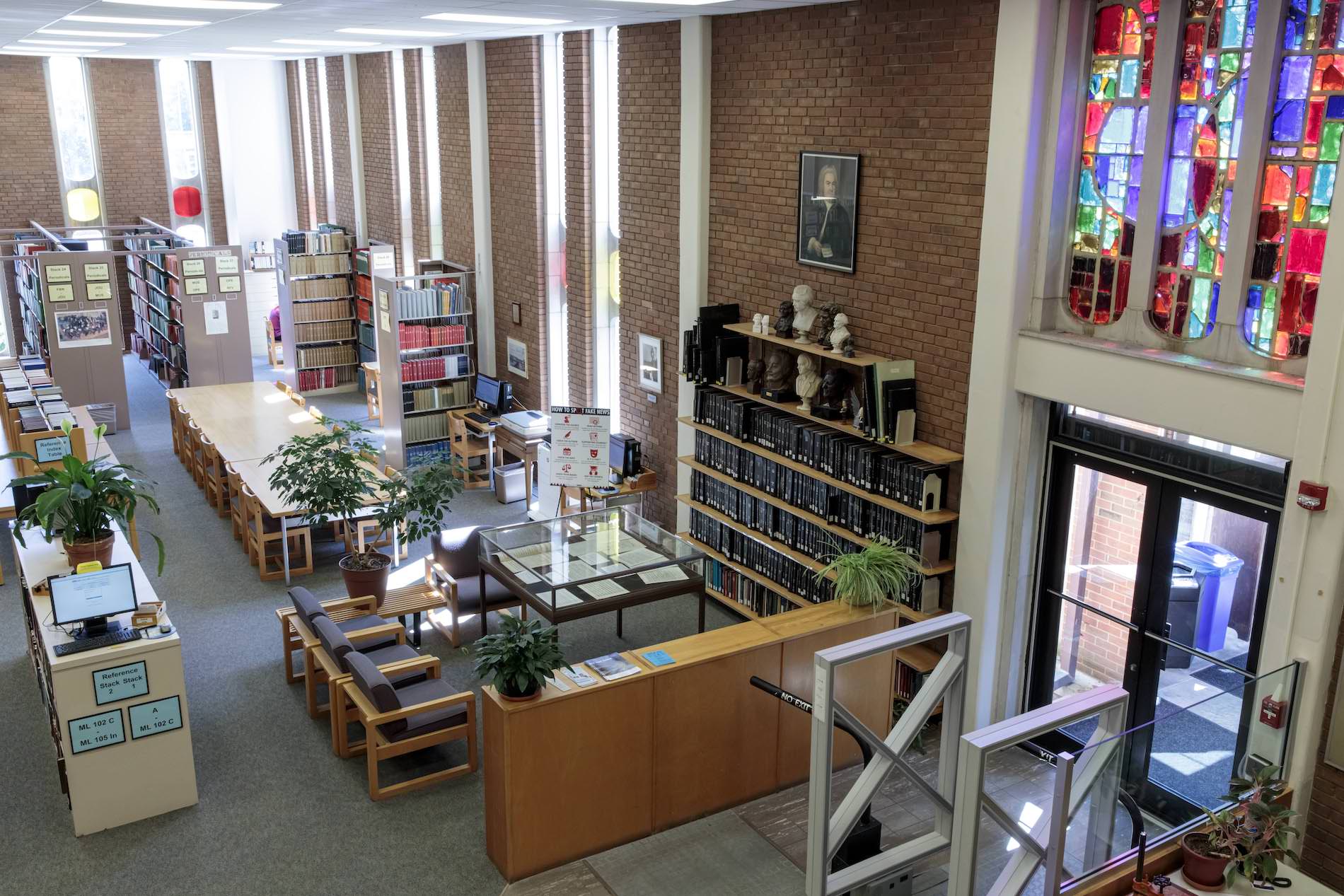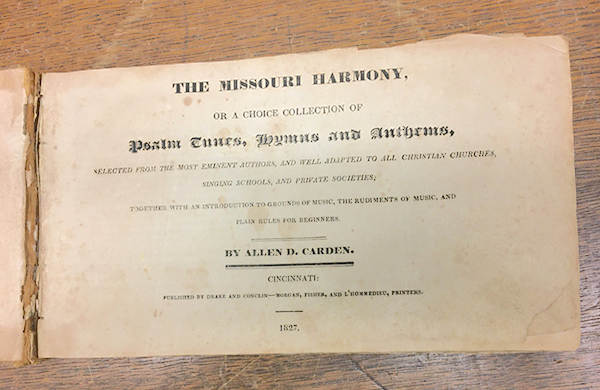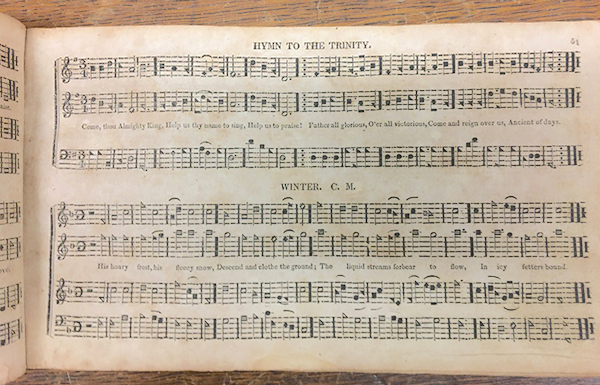
Music Library Acquires Rare Edition of The Missouri Harmony
In November 2023, the Gaylord Music Library acquired an 1827 edition of The Missouri Harmony, a collection of psalm tunes, hymns, and anthems “from eminent authors” that went through multiple editions between 1820 and 1858.

Its compiler, Allen D. Carden, operated “singing schools” that taught reading music in “fa sol la” fashion through the use of “shape-note notation.” While standard musical notation employs oval note-heads, shape-note notation employs a different geometric shape for each of the four pitches (fa, sol, la, and mi) whose pattern of whole and half steps, repeated, constitute the Western musical scale.

Gaylord has seven different nineteenth-century editions or states of The Missouri Harmony as well as several contemporary reprint editions. Some interesting things I learned in cataloging our newest acquisition:
- Though Carden was in St. Louis in 1820, and the first edition has St. Louis as the place of publication, the compilation was printed in Cincinnati, because no St. Louis printer had type font for printing shape-note music.
- Each edition or printing before 1830 required the type to be reset, resulting in variations in format and content. The 1830 edition was the first to be stereotyped; the 1832 edition was the first to claim copyright.
- The publication of The Missouri Harmony reflected an influx of Protestants into largely Catholic St. Louis in the first few decades of the nineteenth century.
The home-grown St. Louis musicologist Ernst C. Krohn published an article and a detailed checklist of editions and states of The Missouri Harmony that helped greatly in cataloging the score.